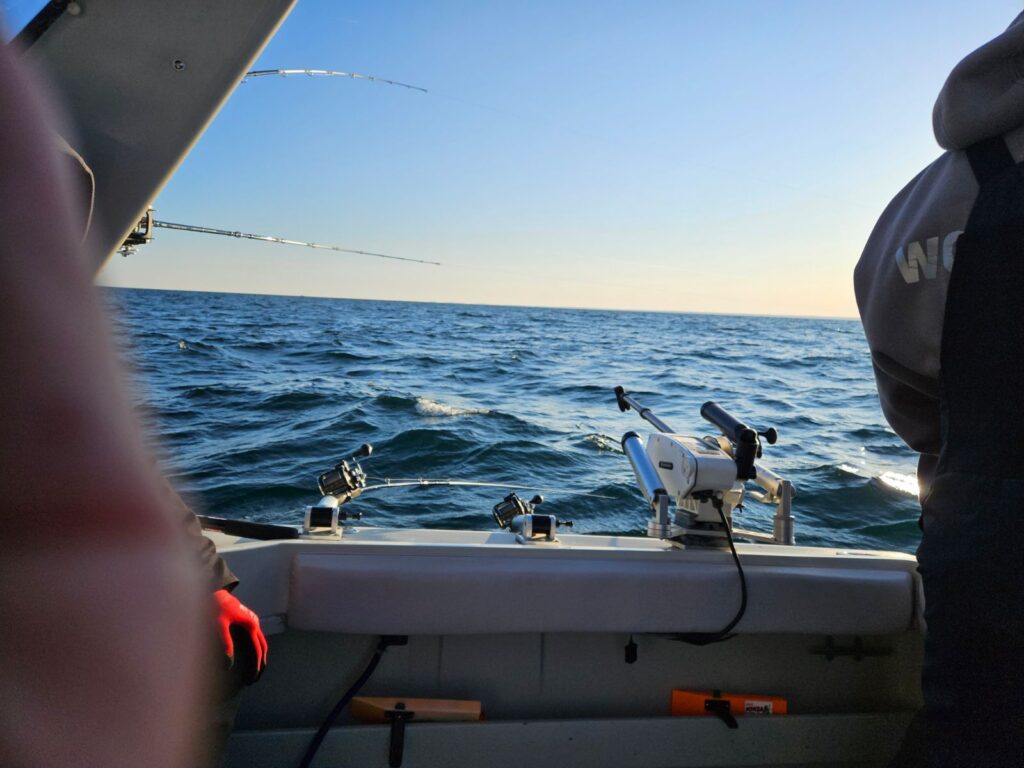 Lake Michigan is renowned for its thriving salmon fishery, attracting anglers from all over the world. One essential tool that has revolutionized salmon fishing on this majestic lake is the downrigger. This device allows you to precisely control the depth at which your bait or lure is presented, increasing your chances of landing a prized salmon. In this comprehensive guide, we will walk you through the step-by-step process of effectively using downriggers for salmon fishing on Lake Michigan.
Lake Michigan is renowned for its thriving salmon fishery, attracting anglers from all over the world. One essential tool that has revolutionized salmon fishing on this majestic lake is the downrigger. This device allows you to precisely control the depth at which your bait or lure is presented, increasing your chances of landing a prized salmon. In this comprehensive guide, we will walk you through the step-by-step process of effectively using downriggers for salmon fishing on Lake Michigan.
Understanding Downriggers
Before diving into the specifics of using downriggers, it’s important to understand how they work. Downriggers are mechanical devices that are typically mounted on the stern of a fishing boat. They consist of a spool and a weight, which is attached to a cable. The weight is lowered to the desired depth and can be raised or lowered throughout the fishing process. The fishing line, with a bait or lure, is attached to a release clip on the cable, allowing you to present your offering at the desired depth.
Selecting the Right Downrigger
Choosing the right downrigger is crucial for a successful salmon fishing expedition. Factors such as weight capacity, ease of use, and durability should be considered. Electric downriggers are the most popular choice due to their convenience and ability to handle heavy weights. Hydraulic and manual downriggers are also options to explore, depending on your budget and preferences.
Preparing Your Gear
To effectively use a downrigger, ensure your fishing rod, reel, and line are suitable for salmon fishing on Lake Michigan. A medium-heavy or heavy-action rod paired with a high-capacity reel is recommended. Spool your reel with a high-quality monofilament or braided line, ensuring it has the appropriate strength to handle the weight of the fish you expect to catch.
Setting Up the Downrigger
Begin by attaching the downrigger to your boat’s stern according to the manufacturer’s instructions. Mount the downrigger rod holder and secure it firmly. Spool the downrigger cable onto the spool, making sure it is taut and free from any tangles or kinks. Attach a downrigger release clip to the cable, ensuring it is securely fastened. Adjust the depth of the downrigger weight based on the salmon’s location in the water column.
Deploying and Presenting Your Bait
Attach your preferred bait or lure to a leader line and secure it to the release clip on the downrigger cable. Lower the downrigger weight and release the clip, allowing the bait to descend to the desired depth. Pay attention to the depth finder or fish finder to locate salmon schools or structures where they are likely to be present. Adjust the depth of the bait as necessary to find the salmon’s preferred feeding zone.
Trolling Techniques and Tips
Once your bait is deployed, begin trolling at a slow and steady pace, typically around 2 to 3 miles per hour. Maintain a consistent speed to keep the bait at the desired depth. Experiment with different colors, sizes, and types of bait or lures to determine the salmon’s preference on that particular day. Keep an eye on your rod tip for any signs of a strike, and be ready to set the hook when a salmon takes the bait.
By mastering the use of downriggers, you can significantly enhance your salmon fishing experience on Lake Michigan. Remember to adapt your techniques and strategies based on prevailing conditions, and don’t be afraid to experiment with different setups until you find
